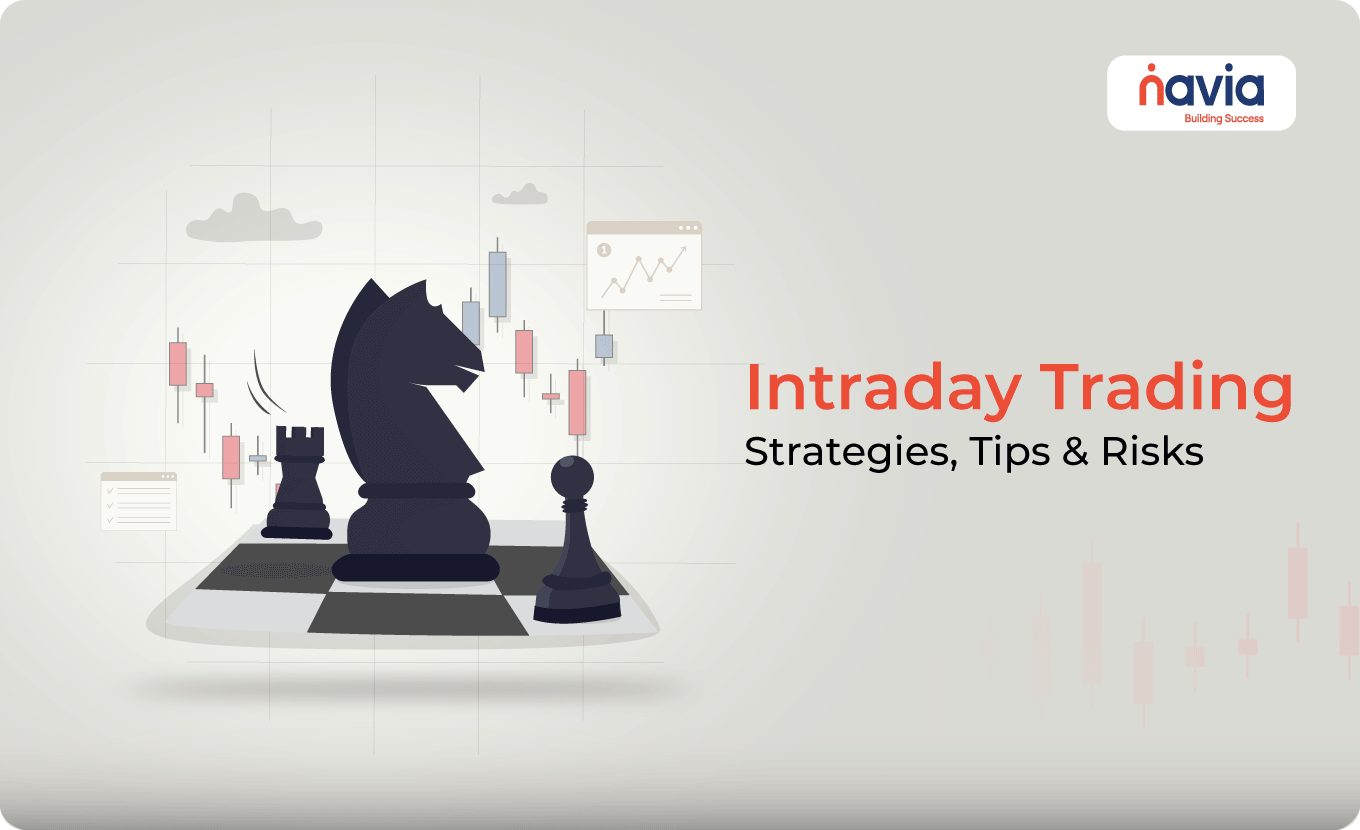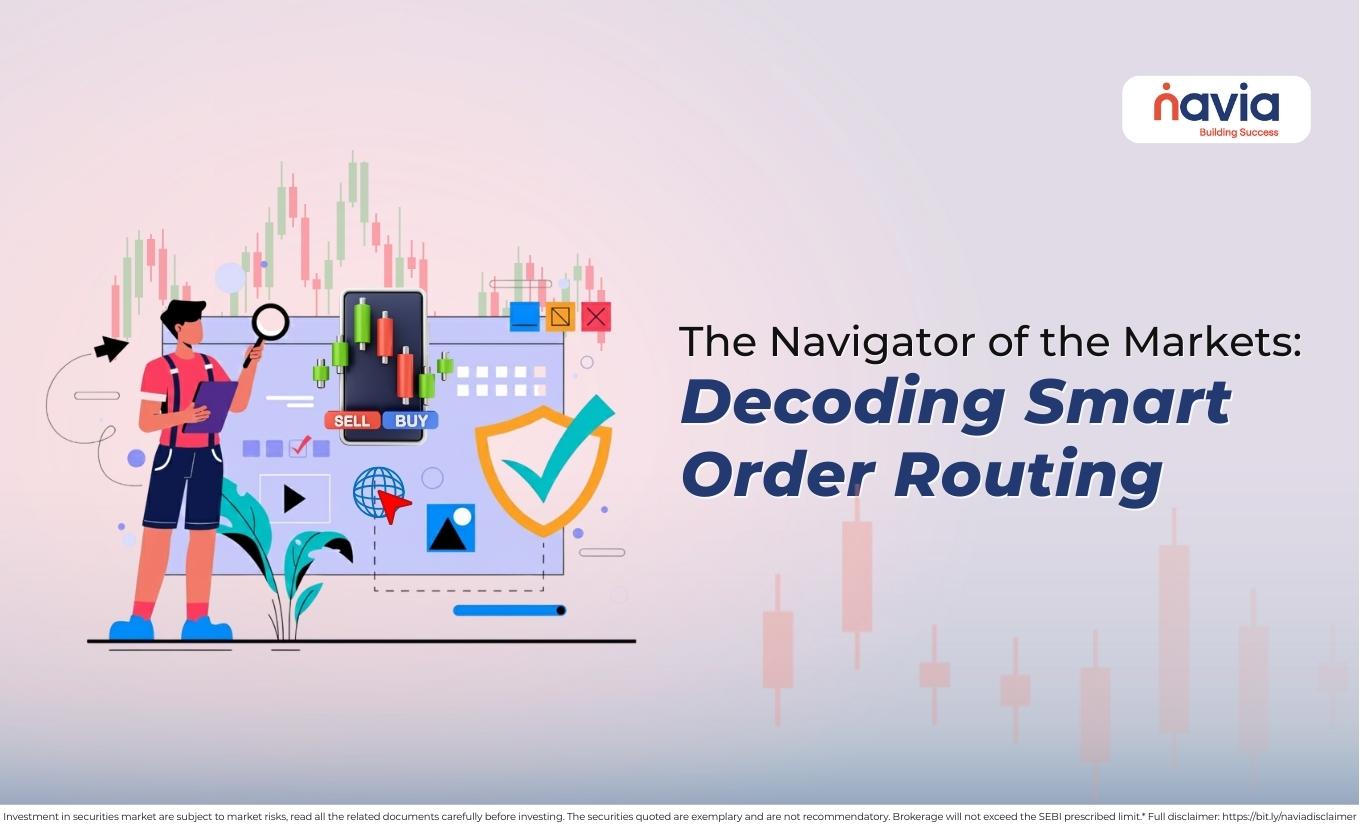Intraday Trading Strategies,Tips and Risks

Intraday trading is a fast-paced gateway to the stock market, that’s why each day it attracts more than thousands of traders. Buying and selling within the same day offers to traders is like a promise to get profits quickly. But remember, if you don’t have a solid intraday trading strategy, you can’t succeed. Also, you need proper risk management skills. Through this blog you can explore what intraday trading is, dive deep into its actionable strategies, must-know tips and help you to decide the right trading style.
What is Intraday Trading?
Intraday trading isn’t a complicated term in the stock market; it refers to buying and selling of financial instruments within the same trading day. The major goal of this strategy is to capitalize on small price movements of stocks, indices, or commodities before the market ends.
Some people have doubts regarding how intraday trading differs from delivery-based trading. Here’s the answer;
🠖 Intraday Trading: It involves buying and selling stocks within the same day, with all positions squared off before the market closes, so no ownership of the stock is carried overnight.
🠖 Delivery-Based Trading: It involves buying stocks and holding them in a demat account for more than one day, granting the investor full ownership.
Intraday trading is widely used in,
🠖 Stocks: Highly liquid shares of companies
🠖 Indices: Nifty, Sensex, etc.
🠖 Commodities: Gold, Crude Oil, etc.
🠖 Forex: Currency like USD/INR
Key Intraday Trading Strategies
If you want to become a successful day trader, choosing the right intraday trading strategies is very important. Here you can see the most effective strategies used by professionals;
Momentum Trading
Momentum trading is considered one of the best intraday strategies, and it is most effective during early trading hours or when the trading volume is high. The traders can buy stocks that are going up in price, and they can sell them when the momentum slows down.
Breakout Trading
Breakout trading is where traders enter a trade when the price moves above resistance or below support levels with a strong volume. The major goal is to profit from sharp price movements that follow these breakouts.
Reversal Trading Strategy
This strategy involves identifying points where a stock’s price trend is likely to change direction from up to down. The traders they selected for this strategy will aim to buy near the bottom of a downtrend or sell near the top of an uptrend.
Scalping
Scalping is a quick trading strategy, here traders can make multiple small trades throughout the day to get profit from tiny price movements. So, the positions are held for just seconds or minutes and that will offer low risk for each trade.
Moving Average Crossover Strategy
Moving Average Crossover Strategy is a technique of using two moving averages, one short-term and one long-term. The buy signal occurs when the short-term average crosses above the long-term, and a sell signal when it crosses below.
Gap and Go Trading Strategy
The Gap and Go strategy involve spotting stocks that open with a significant price gap due to news and then continue moving in the same direction after the market opens. Traders aim to capitalize on this early momentum for quick intraday profits.
Pullback Trading Strategy
Pullback Trading Strategy means entering a trade during a temporary dip (pullback) in an ongoing trend. Traders wait for the price to retrace slightly and then buy in uptrend or sell in downtrend.
Must-Know Intraday Trading Tips
Understanding tips of intraday trading is also important as learning strategies. Here you can see the essential intraday trading tips for beginners and professionals.
Understanding of Intraday Trading
The person should know the meaning of terms like scalping, bid price, alpha, beta, etc. And strategies.
Begin With Virtual Money
If you start trading with virtual money, you can learn different trading techniques and there is no risk of losing money.
Trade With a Plan Not Emotion
Emotional trading leads to irritational decisions, so you must stick to your plan, even when the market gets volatile.
Follow Market Trends
Nobody can predict market movements, but traders use some technical factors to depict the market. The fact is these factors don’t provide any guarantees, so you should travel with the market trends.
Spend Time for Monitoring
In day trading, the trader should monitor the market movements throughout the market session. It is necessary to make the right decisions and is not suitable for professionals who are employed in another job.
Stick to 1-2 Trades a Day (for beginners)
If you are a beginner and trade so many trades a day, that will cause negative impacts. Overtrading will increase stress and risk more than profit, so you must focus on quality trades, not quantity.

Risks Involved in Intraday Trading
We know the rewards from intraday trading is attractive, but intraday trading rules demand caution due to inherent risks, like:
🠖 High Volatility: Price can change anytime that results in unexpected losses.
🠖 Execution Delays: A few seconds can make or break a trade in fast-moving markets.
🠖 Emotional Pressure: Constant monitoring can lead to heavy stress.
🠖 Quick Decisions: Short-term fluctuations and false signals can mislead traders that will lead to poor decisions.
🠖 Overtrading: Trying to make multiple trades in a day will result in losses and high brokerage charges.
Intraday vs Delivery Trading: A Quick Comparison
| Feature | Intraday Trading | Delivery Trading |
| Time Horizon | Same day | Days, weeks or months |
| Ownership | No | Yes |
| Goal | Get profit from small price movements | Long-term growth |
| Risk Level | High | Moderate to low |
| Capital Requirement | Lower (with margin) | Higher |
| Monitoring | Active | Less-time intensive |
| Ideal For | Active Traders | Long-term investors |
Who Should (and Shouldn’t) Do Intraday Trading?
Ideal for;
Traders who have high risk tolerance
The person who is available to monitor the market in the trading hours
They have strong market knowledge and quick decision-making abilities
Not Ideal for;
Beginners who are new to the trading
Long-term investors seeking portfolio growth
Individual with limited time to monitor the market
Conclusion
Choosing the right intraday trading strategy, disciplined mindset and knowledge about the intraday trading rules will lead a trader to success. If they aren’t planned well, that causes losses so the traders who are ready to start intraday trading should be able to manage risk to avoid these losses. Whether you are just starting or looking to refine your trading approach, this blog is a guide for you.
Master the markets with smart strategies and real-time insights. Open your free trading account with Navia today and start your journey with expert guidance!
Do You Find This Interesting?
Frequently Asked Questions
What is the golden strategy for intraday trading?
The golden strategy means following market trends and using strict stop-loss orders to manage risk. And is also combined with technical analysis to make informed and high-profitability trades.
Which option strategy is best for intraday trading?
The best option strategy for intraday trading depends on many factors, like market volatility, directional bias, time to expiry, and your risk appetite.
What is the 3-5-7 rule in trading?
The 3-5-7 rule in trading is a risk management guideline that suggests;
🠖 Risk no more than 3% of your total trading capital on a single trade
🠖 Limit your total exposure in the market to 5% at any given time
🠖 Aim to win trade at least 7% profitable than your losing trades
How can I get a big profit intraday?
To earn big profits in intraday trading, focus on strong technical analysis and market trends.
What is the best time for intraday trading?
The best time for intraday trading is typically between 9:30 AM to 10:30 AM, when market volatility and volume are highest, offering better trading opportunities.
DISCLAIMER: Investments in the securities market are subject to market risks, read all the related documents carefully before investing. The securities quoted are exemplary and are not recommendatory. Brokerage will not exceed the SEBI prescribed limit.






